Hur länge kommer a 48 Volt batteri sist?
När du planerar ett energilagringssystem för ditt hem, speciellt för sol- eller backup -kraft, 48-voltplattformen är en populär och effektiv standard. En viktig fråga som naturligtvis uppstår är, "Hur länge kommer ett 48V -batteri faktiskt att hålla?" Svaret finns inte i spänningen ensam; Det bestäms av batteriets kapacitet och hur du använder det.
Ett 48V-batteriets runtime beror helt på dess amp-timme (ah) eller kilowattimma (kWh) kapacitetsgradering och kraftdragningen (i watt) av de apparater du kör. Ett större kapacitetsbatteri, Som en 48V 200AH -enhet, kommer att pågå dubbelt så länge som en 48V 100AH -enhet under samma belastning. Moderna 48V väggmonterade batterisystem gör det enkelt att välja rätt kapacitet för dina behov.
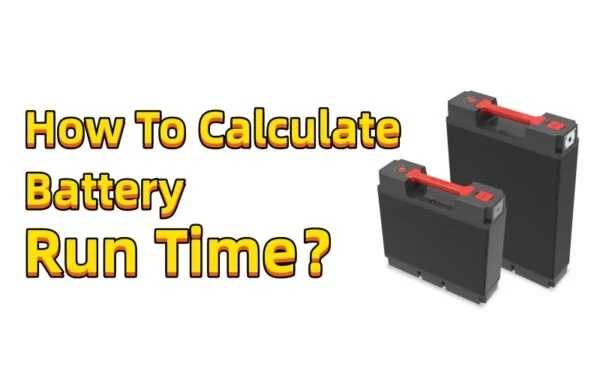
På Gycx Solar, Vi är specialiserade på att utforma 48V energisystem som ger pålitliga, långvarig kraft. Låt oss dela upp hur vi beräknar runtime och svarar på några andra kritiska frågor om dessa kraftfulla batterier.
Hur många solpaneler behöver jag för att ladda ett 48V 100AH -batteri?
Para ditt 48V 100AH -batteri med solpaneler är nyckeln till verklig energinoberoende. Men hur storlekar du din soluppsättning för att säkerställa att ditt batteri får en full laddning varje dag?
För att pålitligt ladda a 48På 100Ah (vilket är 4.8 kWh) batteri på en typisk dag, Du skulle i allmänhet behöva en solpaneluppsättning på ungefär 1.5 kW till 2.5 kW. Detta innebär ungefär 4 till 6 modern, Högeffektiv 400W solpaneler. Det exakta antalet beror på din specifika plats, årstiden, och lokala vädermönster.
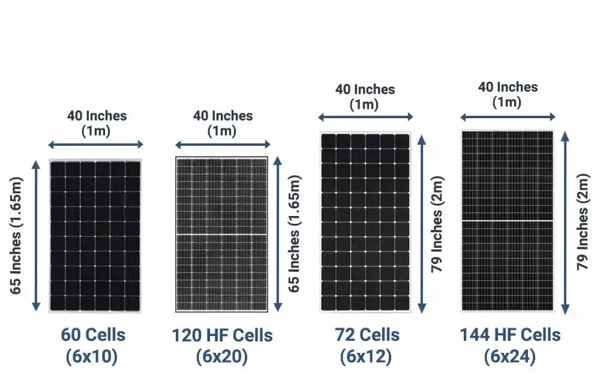
Dyk djupare: Olika regionala klimat
Så här bestämmer vi rätt soluppsättningstorlek:
- Energi att fylla på: A 48V 100AH LFP (Litiumjärnfosfat) Batterilager 4.8 KWH av energi. Att helt ladda det dagligen, Du måste generera detta belopp plus lite extra för att täcka systemförluster.
- Toppsol timmar (Psh): Detta är en avgörande faktor som varierar beroende på säsong. I Japan, du kanske kommer över 4.5 PSH på sommaren men bara 2.5-3 PSH på en klar dag på vintern. Vi utformar system baserat på ett konservativt året runt genomsnittet (till exempel, 3.5 - 4 Psh) för att säkerställa tillförlitlig laddning under större delen av året.
- Systemförluster: Vi står för förlorad energi på grund av panelvärme, ledningar, och effektiviteten hos MPPT -laddningskontrollern (typiskt 15-25% total förlust).
- Beräkningen:
- Obligatorisk solenergi (kW) = Energi behövs (kWh) / (Topp soltimmar x effektivitetsfaktor)
- Exempel:
4.8 kWh / (3.5 hours x 0.80 efficiency) = 1.7 kW (1700 Watts) - Detta skulle betyda
1700W / 400W per panel ≈ 4 to 5 panels. Vi rekommenderar ofta en extra panel för att tillhandahålla en buffert för molniga dagar.
Denna försiktig, Platsspecifik storlek säkerställer att ditt batteri är redo att driva dig genom natten eller nästa Typhoon-säsong.
Vad är säkerhetskopieringstiden för ett 100AH 48V litiumbatteri?
Låt oss bli specifika. Du har ett 100AH 48V litiumbatteri. Hur många timmars säkerhetskopiering kan du faktiskt förvänta dig av det under ett strömavbrott?
A 100AH 48V litiumbatteri Ger totalt av 4,800 wattmurs (Wh) eller 4.8 kilowattimmar (kWh) av energilagring. Säkerhetskopieringstiden är denna totala energi dividerat med kraftförbrukningen för dina apparater. Till exempel, det kan köra en 480-watt belasta 10 timmar eller en tändare 200-watt belasta 24 timmar.
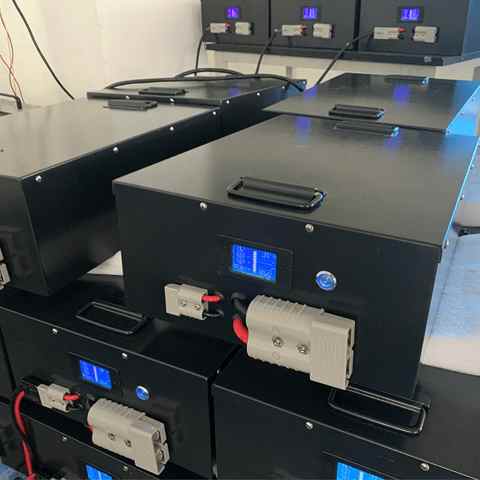
Dyk djupare: Beräkna din säkerhetskopiering
Här är den enkla matematiken:
Körning (Timme) = Total energi (Wh) / Din last (Watt)
Låt oss titta på några praktiska scenarier för ett hem:
- Scenario 1: Väsentliga belastningar (ca. 300W): Under ett avbrott, Du kör ditt effektiva kylskåp, Flera LED -lampor, Din internetrouter för uppdateringar, och debiterar dina telefoner.
4,800 Wh / 300 W = 16 hours
- Scenario 2: Måttliga belastningar (ca. 800W): Du lägger till en tv och en riskokare till det väsentliga.
4,800 Wh / 800 W = 6 hours
Det är därför modernt 48v väggmonterat batteri System är så populära. En enda 4,8 kWh -modul ger utmärkt säkerhetskopia för Essentials. Och eftersom de är modulära, Du kan enkelt lägga till en andra enhet för att fördubbla din säkerhetskopieringstid för större sinnesfrid. På Gycx Solar, Vi hjälper dig att utföra en lastanalys för att säkerställa att du får den säkerhetskopieringstid du förväntar dig.
Går litiumbatterier dåligt från att sitta?
Vad händer om du har ett batterisystem men inte använder det på ett tag? Kan ett litiumbatteri gå dåligt bara från att sitta i förvaring, oanvänd?
Alla batterier, inklusive litiumjon, kommer att försämras långsamt över tiden även om den inte används. Detta kallas åldrande åldrande. dock, Modern LFP (Litiumjärnfosfat) Batterier är exceptionellt stabila. De har också en mycket låg självutgiftsränta (1-3% per månad), vilket innebär att de tappar mycket liten laddning medan de sitter. Nyckeln till att säkerställa en lång livslängd är att hålla dem i en cool plats på en delstatus (runt 40-60%).
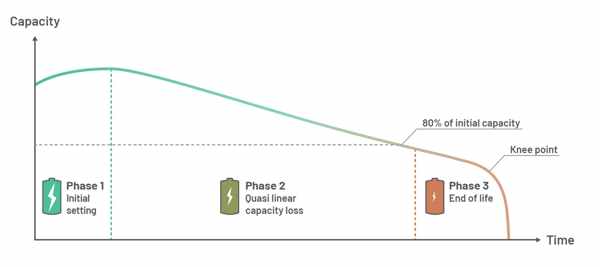
Dyk djupare: Kalender åldrande vs. Självutgift
Det är viktigt att känna till de två sätten ett batteri åldras medan de är i viloläge:
- Självutgift: Detta är den tillfälliga och långsamma förlusten av avgift. Du kan helt enkelt ladda batteriet för att återställa det. Den låga hastigheten på LFP -batterier innebär att du kan lagra dem i över ett år och de kommer fortfarande att behålla en betydande laddning.
- Åldrande åldrande: Detta är det permanenta, irreversibel förlust av kapacitet som sker under flera år, oavsett användning. Hastigheten på denna process påverkas starkt av två faktorer:
- Temperatur: Värme är den största fienden. Ett batteri som är lagrat i en varm miljö kommer att åldras mycket snabbare än ett lagrat i en cool, klimatkontrollerat utrymme.
- Laddningsläge: För långvarig lagring, hålla ett litiumbatteri på 100% Full sätter stress på sina celler och påskyndar åldrande. Lagra det på 0% är också farligt. A 40-60% Laddning är det perfekta lågspänningstillståndet för lagring.
Ett korrekt lagrat LFP -batteri kan sitta mycket länge och förbli frisk och redo för service.
Kan ett litiumbatteri ta eld när det inte laddas?
Batterisäkerhet är det viktigaste övervägandet. Vi hör ofta om bränder relaterade till laddning, Men kan en hög kvalitet litiumbatteri1, Som ett i ett hemlagringssystem, ta eld när det bara sitter där, inte laddar eller urladdas?
Det är extremt sällsynt för en hög kvalitet, oskadat litiumbatteri för att ta eld spontant när det inte används. En sådan händelse skulle nästan säkert kräva en befintlig inre kortslutning, som vanligtvis orsakas av antingen a tillverkningsfel eller tidigare fysisk skada till batteriet. Det är därför att välja batterier från ansedda tillverkare med rigorös kvalitetskontroll och en säker kemi som LFP är så kritisk.
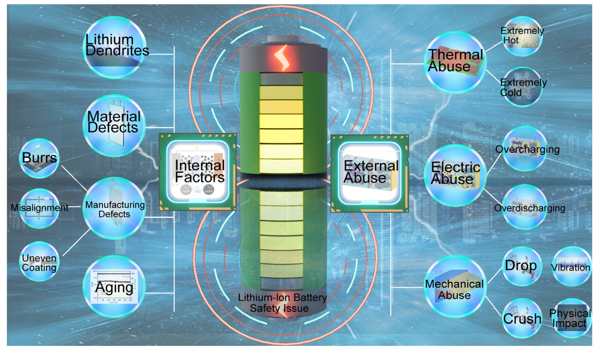
Dyk djupare: Förståelse och mildra risken
Här är en uppdelning av detta viktiga säkerhetsämne:
- Orsaken (Inre kortslutning): Inuti en battericell finns ultratunna lager av positivt och negativt material separerade av en separator. En eld kan starta om dessa lager berör. Detta kan orsakas av en mikroskopisk tillverkningsfel eller om batteriet tappades, bucklig, eller punkterad, orsakar intern skada.
- Kvalitetskontrollens roll: Ansedda batteritillverkare investerar kraftigt i tillverkning av renrum och flerstegstestning (inklusive röntgenstrålar och åldrande test) att upptäcka och screena ut celler med potentiella defekter. Detta är den första och viktigaste försvarslinjen.
- LFP -säkerhetsfördelen: Detta är avgörande. LFP (Litiumjärnfosfat) Kemi är i sig mycket mer kemiskt och termiskt stabilt än andra litiumjonstyper (som NMC eller LCO som finns i telefoner och bärbara datorer). Även om en LFP -cell skulle misslyckas, Det är mycket mer troligt att luktar rök och misslyckas säkert snarare än att bryta ut i en våldsam eld.
- Betydelsen av ett skyddssystem: En professionell 48v väggmonterat batteri är inte bara ett batteri; Det är en bess. Den robusta, Skyddshölje är utformad för att förhindra den fysiska skadan som kan leda till en intern kort. De interna BMS ger också ett lager av konstant övervakning.
Våra kunders säkerhet är vår högsta prioritet. Det är därför vi exklusivt använder LFP-batterier från tillverkare i världsklass. Vi känner till deras stränga kvalitetskontroll och den inneboende säkerheten för LFP -kemin ger den högsta skyddsnivån och sinnesfrid för ett system som är installerat i ditt hem.
Ett 48V -batteri är ryggraden i ett kraftfullt och effektivt energilagringssystem. Att förstå hur länge det kommer att hålla är en enkel beräkning baserad på dess kapacitet (ah) och din last (W). Modern 48v väggmonterat batteri system, Byggt med säker och långvarig LFP-teknik, erbjuda en pålitlig, lågt underhåll, och långsiktig lösning för energinoberoende och säkerhetskopieringskraft.
Om du har frågor om att utforma ett 48V -batterisystem, dimensionering av en soluppsättning, eller vill utforska de säkraste och mest pålitliga batterilösningarna för ditt hem, Vårt expertteam på GYCX Solar är här för att hjälpa till. Kontakta oss för ett professionellt samråd! Gycxsolar välkomnar ditt samråd, Våra experter ger dig en snabb och tillfredsställande lösning.
Att utforska riskerna med litiumbatterier kan hjälpa dig att fatta välgrundade beslut om deras användning och lagring. ↩
